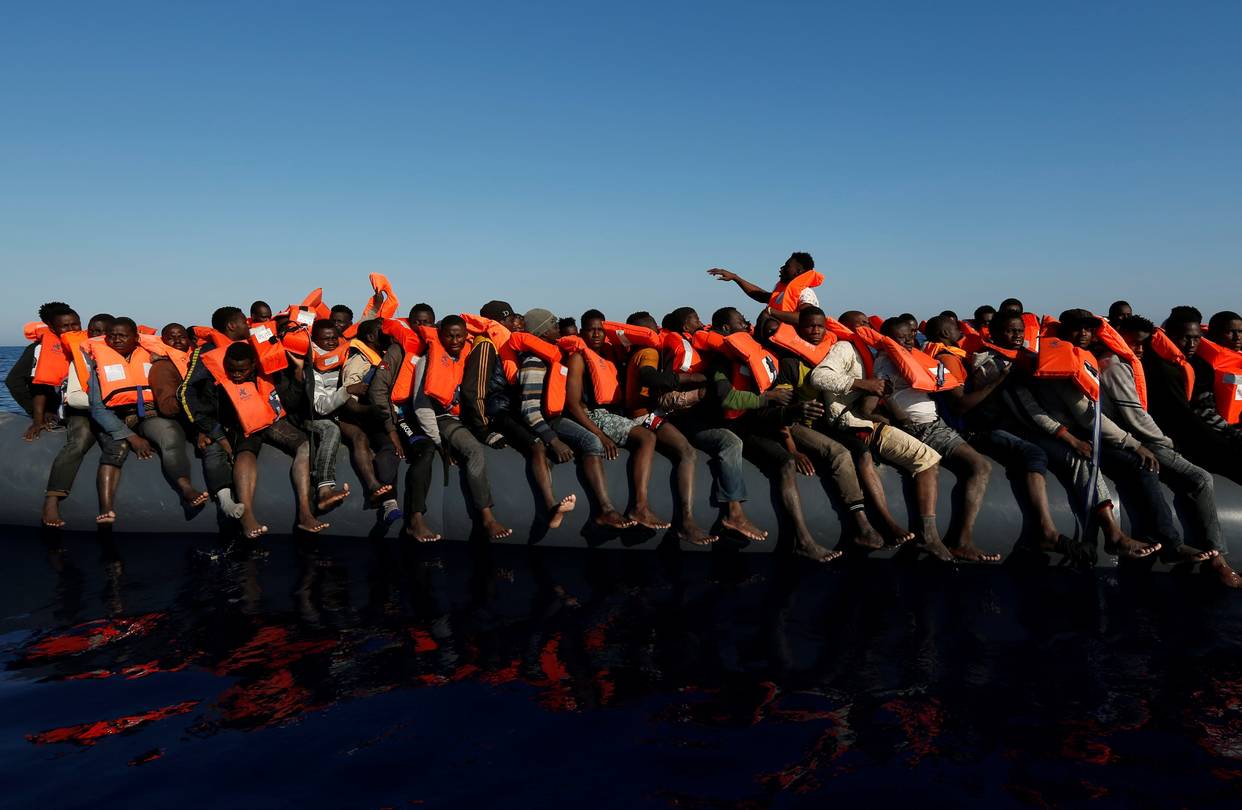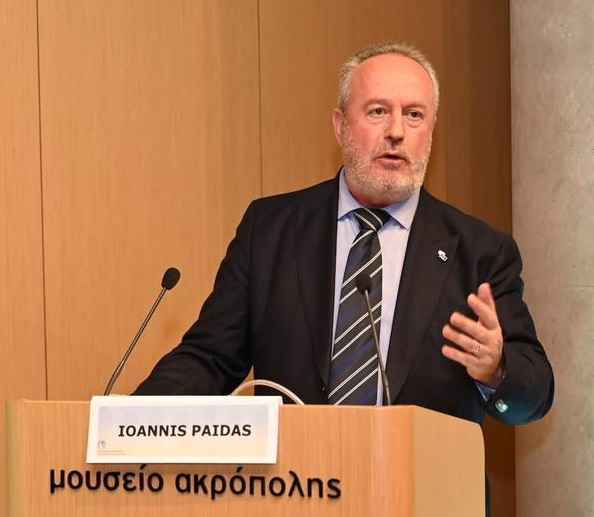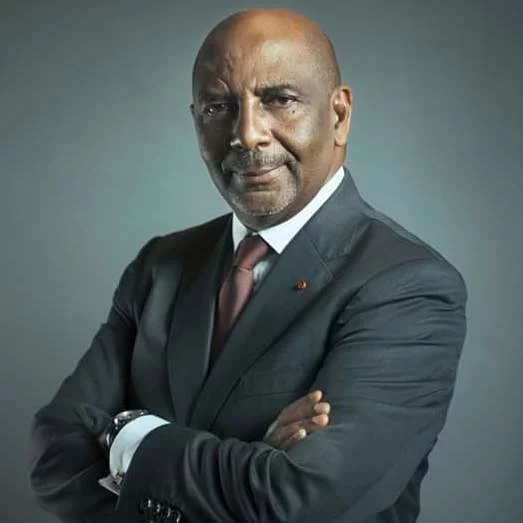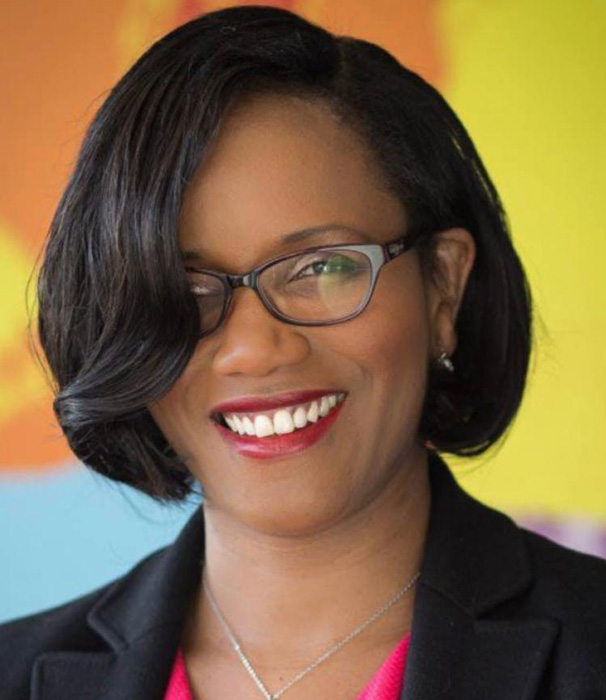Emergency crews near the shores of Libya are confronting a grim paradox: There have never been so many rescue boats along the sea passage to Italy. Yet never before have so many people been dying there.
Three years into an all-out push to stop fatalities in the central Mediterranean Sea, it remains the world’s deadliest migration route. Despite efforts by dozens of governments, navies, international organizations and aid agencies, smuggling practices have become more hazardous on Europe’s southern waters. Some 4,500 people died there last year, a toll 2017 is on track to surpass.
Those lost lives are sparking recriminations over who is to blame, pitting aid groups that say there aren’t enough rescuers on the sea against European officials who say there may be too many. Both sides agree the number of people crossing and dying in the central Mediterranean is set to break another record this year. Last year, about 180,000 crossed over. So far this year, arrivals are up almost 24% from the same period in 2016.
Increasingly, rescued migrants are carried to Italy by aid agencies like Doctors Without Borders. Such NGOs rescued nearly 47,000 migrants last year and were involved in about a quarter of all operations. This year, they have been involved in about a third. International conventions require rescued migrants to be brought to a safe country
Aid groups fault the European Union for deploying too few rescue boats, too far from Libyan waters. The NGOs say if they weren’t there, even more people would die.
EU officials, however, have been pursuing an explicit policy of staying away from the coast to avoid encouraging more migrants to undertake the perilous passage. So many aid agencies are now sailing so close to Libya, the EU argues, that they may be acting as a pull factor for migrants and a boon for smugglers sending out rubber boats.
The recriminations show how divisions between Europe’s humanitarians and its border patrols are enabling the very traffic they all want to stop. For years, the two sides have debated where and how ships should respond. Meanwhile, thousands have died.
“If they keep arguing instead of working together, smugglers will be able to work almost unhindered,” said Alfonso Giordano, professor of political geography at Rome’s LUISS University.
The death rate is rising, all sides agree, in part because smugglers are using more treacherous boats. Smugglers are stripping engines from dinghies mid-journey, authorities say, stranding horrified migrants at sea. More crossings are taking place at night and in extreme weather. Boats are often so packed there wouldn’t be room to wear life jackets even if anybody had one.
This is happening, some officials argue, because smugglers know their boats only need to make it to the line of rescue ships sitting just offshore. EU border agency Frontex says smugglers sometimes give the migrants phones with the NGOs’ numbers already programmed in.
“We have never had so many vessels deployed to save lives and we have never had so many deaths,” said Fabrice Leggeri, head of Frontex.
In contrast, the NGOs say smugglers are behaving more dangerously because an EU naval patrol has destroyed more than 400 of their boats. That practice, they say, discourages cartels from investing in supplies they figure they are bound to lose at sea anyway. Life in Libya, they add, has become so horrible that many migrants are willing to board hopelessly treacherous boats to escape.
“Often, all of the women have been raped,” said spokeswoman Laura Lanuza for rescue agency Proactiva Open Arms. “They don’t mind if they die finally in the sea, honestly, because they can’t stand to be in Libya anymore.”
Two years ago, Frontex unveiled a program to stop the deadly passage. It planned for Italy’s navy to end its roughly $10-million-a-month rescue missions along Libya’s shore. In their place, the EU dispatched patrol boats closer to the Italian coast, far from Libya.
The EU sought to make the crossing more difficult so people would stop attempting it, bringing down deaths overall, according to an EU report on the patrols. It warned, however, that the void could risk higher fatalities, at least at first, it said.
The plan didn’t go as hoped, Frontex now says. Some 500,000 people have crossed since then, and 11,200 died trying. Italy’s maritime emergency center has continued to get distress calls virtually every day from migrants on stranded dinghies.
It is a crime under international maritime law to ignore such alerts. So when no rescue ship is nearby, the emergency center is obliged to send the next nearest ship.
Often that has meant calling on container ships so enormous they often pose a danger to the boats they are trying to save. In April 2015, more than 800 people died when a dinghy drove into the cargo ship coming to rescue it. A similar incident killed 400 a week earlier.
The procedures have infuriated commercial shippers. “We feel very strongly that as long as Europe is in charge of the rescue organization, we’re never going to see a resolution,” said Peter Hinchliffe, Secretary-General of the London-based International Chamber of Shipping, which has asked the United Nations to send rescuers.
Cargo ships also lack medical staff and supplies, one reason why NGOs say they have stepped in. Nearly every dinghy has a medical emergency on board, they say: Refugees are arriving with chemical burns and fresh torture wounds from kidnapping gangs in Libya. Four times this year, a passenger gave birth at sea.
“We are the ones saving lives,” said Stefano Argenziano, director of search operations for Doctors Without Borders. “They’re blaming the firefighter for the fire.”
With wsj.com




































